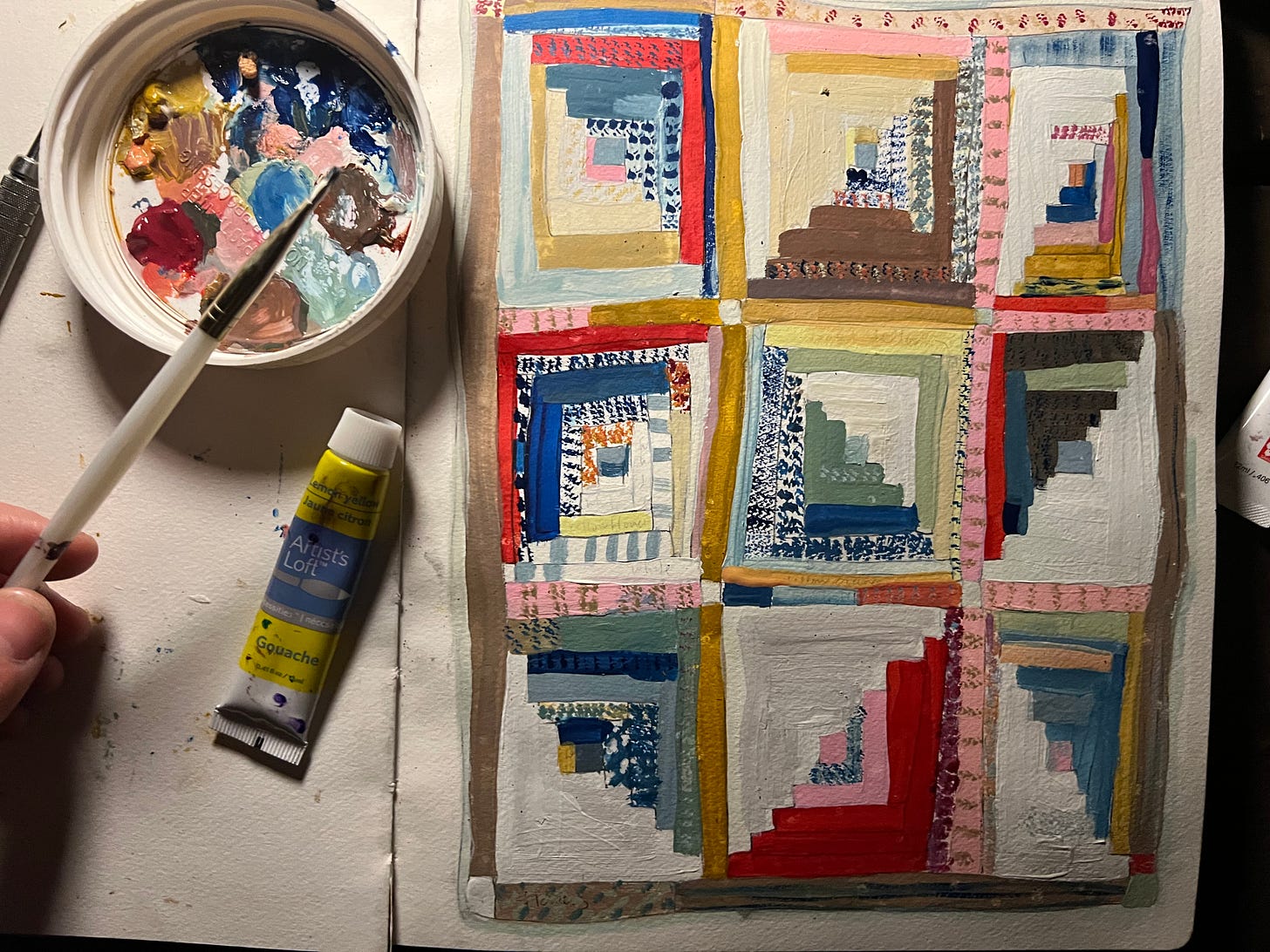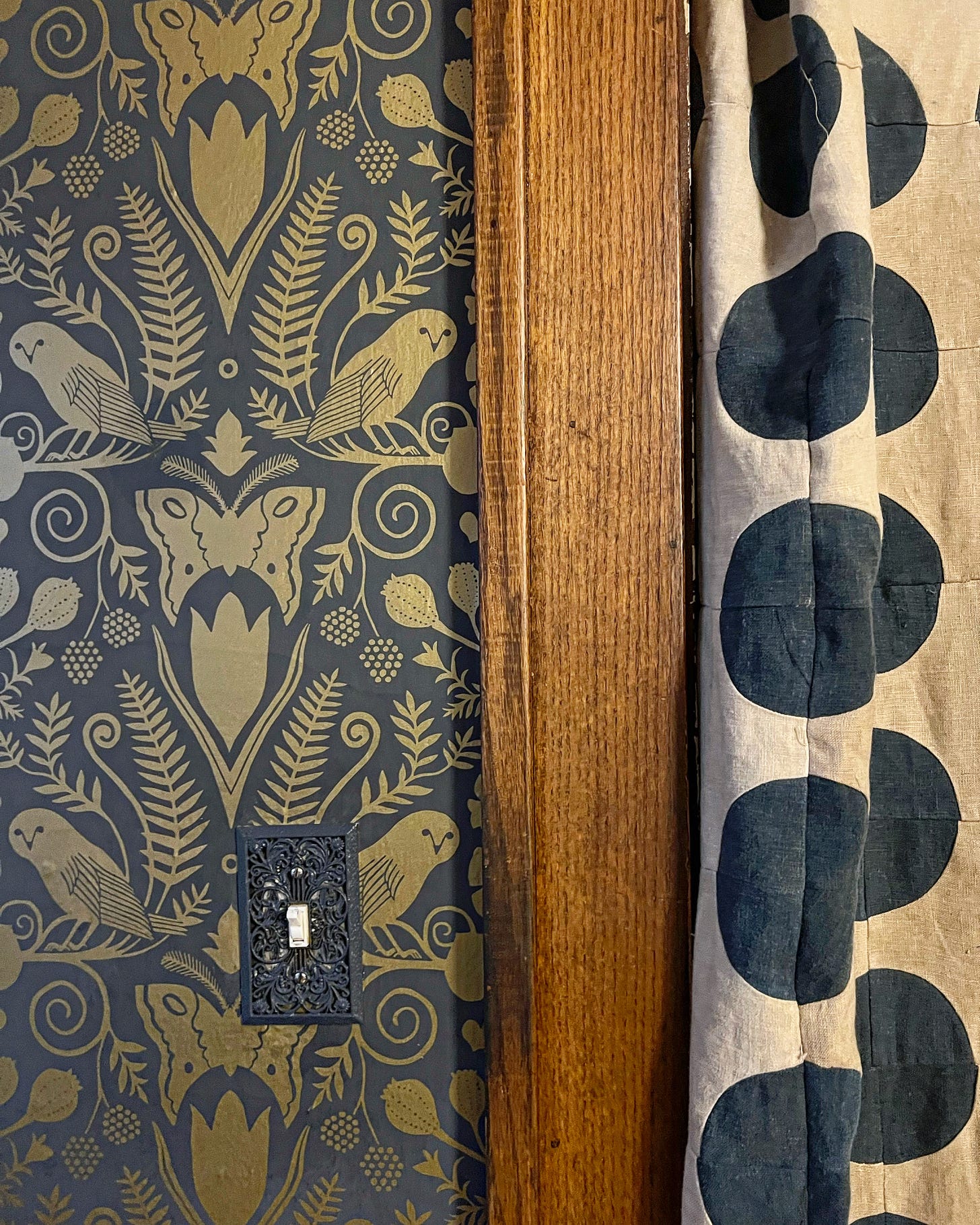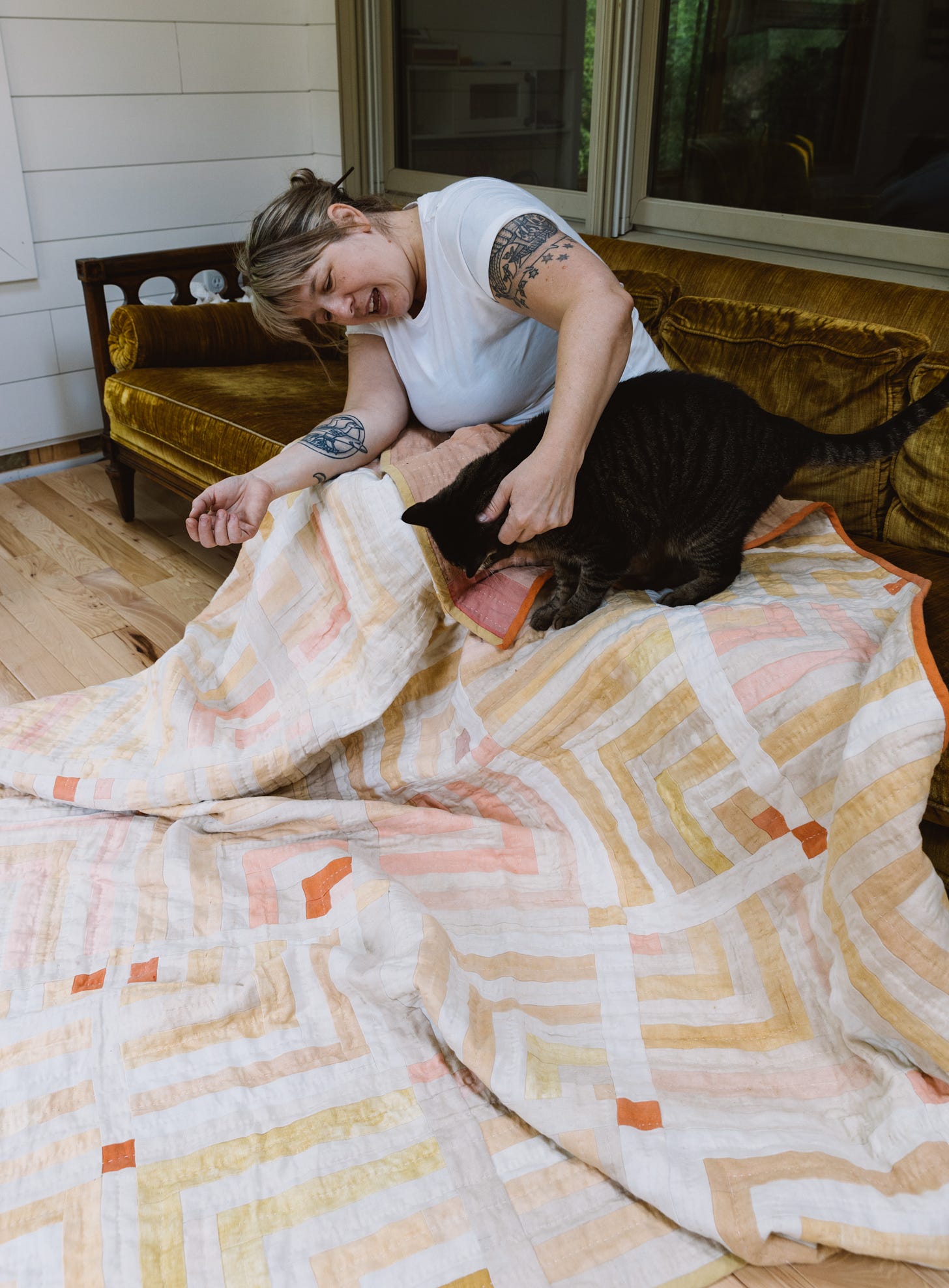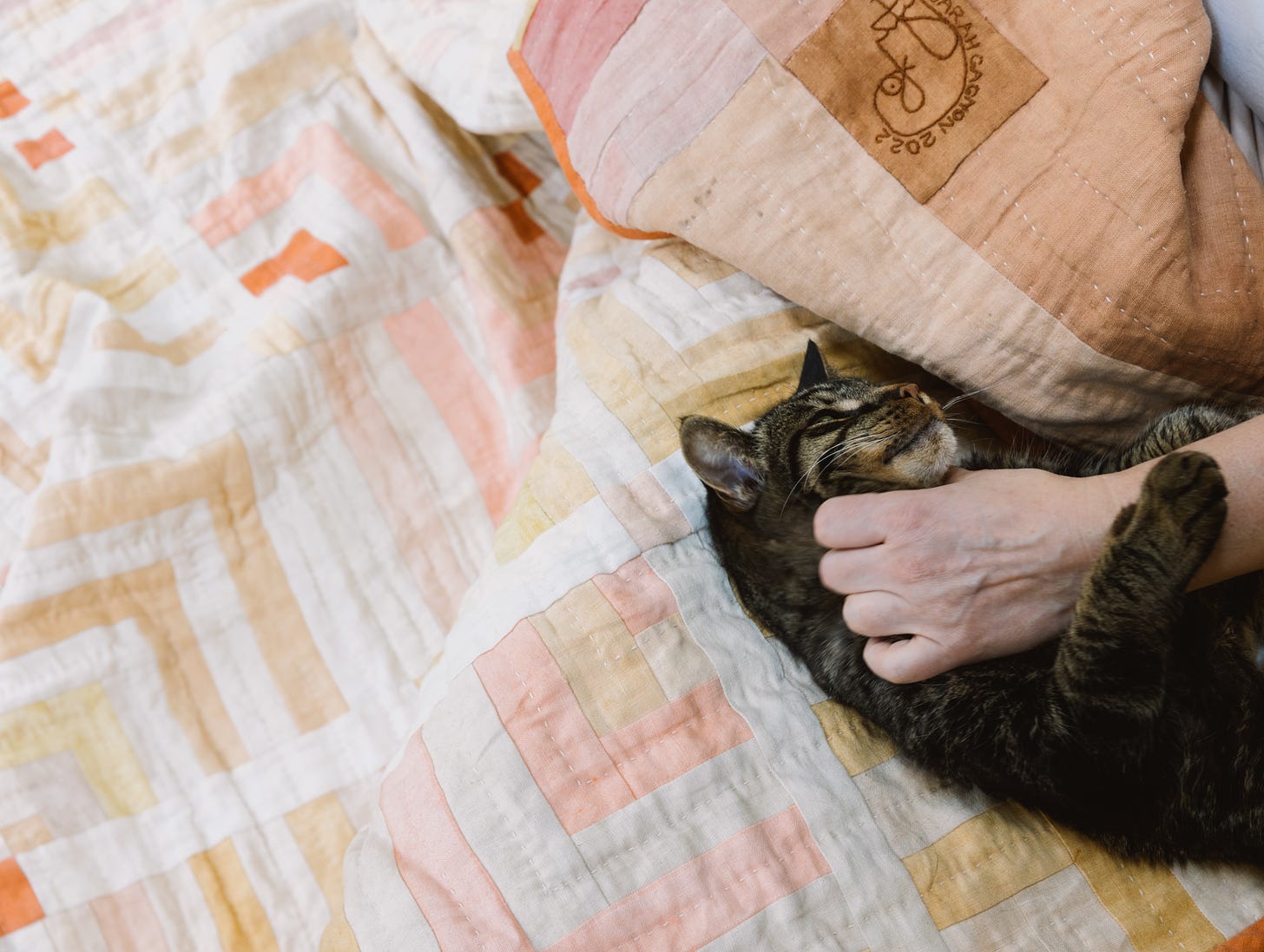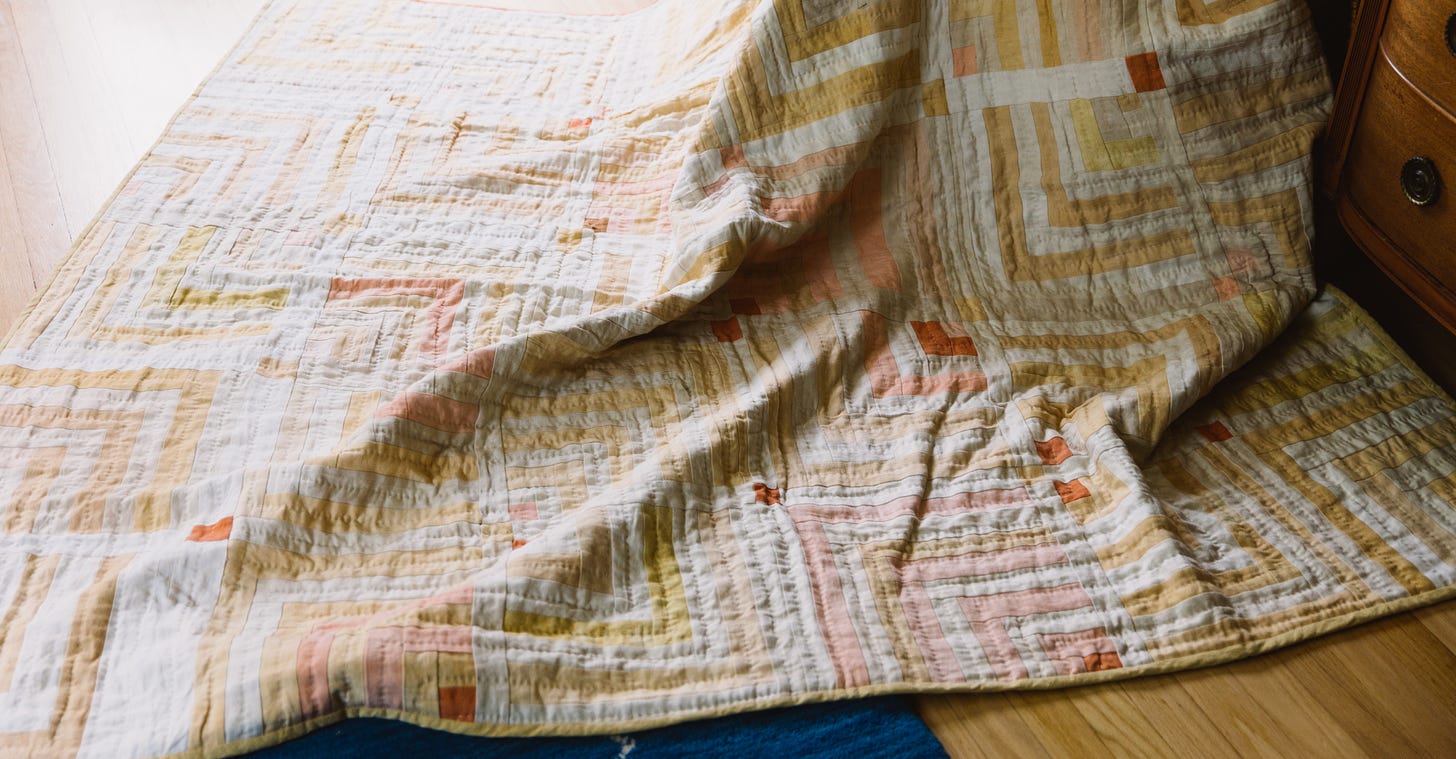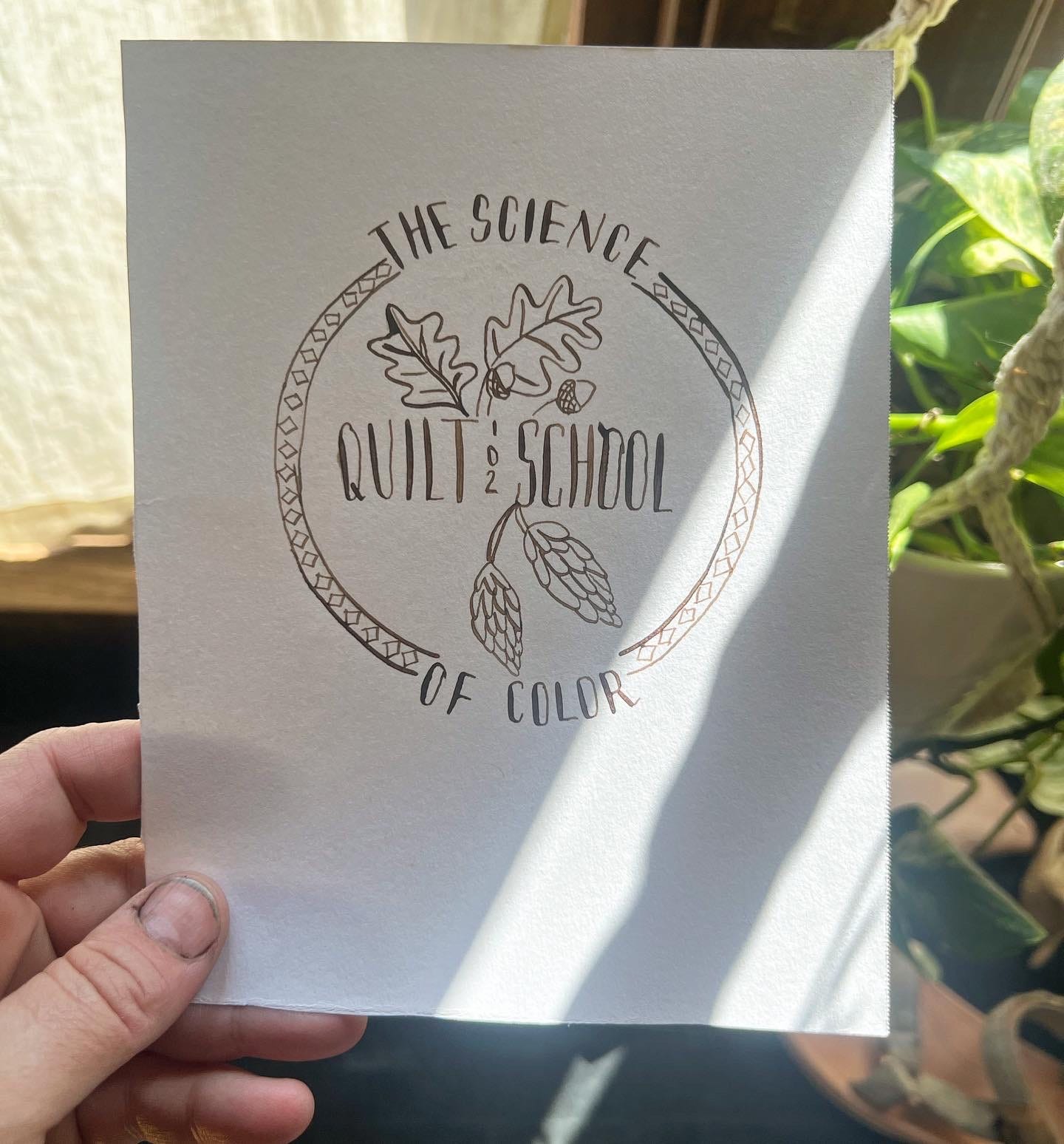

Discover more from Pelican Quilts
I give into my obsessions. Whether it is with a a piece of art, a quilt or a quilter. I love finding something or someone that I can obsess over. In a word, I am a fan. A fangirl.
When I started imagining the Quilt School zine series I had this approach in mind: to share my love of obsessing over quilts and the great quilters. I hoped that this passion and passion-infused-learning will come through my writing and drawings in these booklets.
There were many years where I was shy about how much I loved being a fan. Shy about how I obsess over something or someone. Over the years I have come to embrace this part of myself without shame. Not only that but I have come to understand that is a key to learning. I call this method of learning fan-based pedagogy or more simply, fangirl learnin’.

There is something of middle school that is evoked when we think of being a fangirl. That mania that comes over us in those early phases of our lives when we are waking up to what we like, what we love, and what really turns us on. I wonder if we slowly let that feeling go as we learn to take ourselves seriously. Or maybe we were hurt and grew cynical. It would be a shame to lose this because it has an incredible capacity to help us learn and grow.
Over the years a lot of my creative education has come from unabashed fandom. With quilting it started with discovering Gees Bends Quilters like Mary Lee Bendolph, Lucy Mingo, and Loretta Pettway. I have spent hours painting quilts to study them for my own personal meditation.
My admiration turned to Maura Ambrose’s quilts produced under the name Folk Fibers. I couldn’t stop looking at her work. I paid a kind of attention that is required to really understand the method and the compositional approach of these artists. I don’t copy them, but by studying them, they transformed me. There are other works of non-quilt art that have caught me under their spell. The work of post-expressionists and contemporary artists like Agnes Martin, Louise Bourgeois, David Hockney, Jean-Michel Basquiat, and Cindy Sherman to name a few. The nameless medievalists from the Pelican and her Piety, the Bayeux Tapestry, and all those fantastic bestiaries. More recently I’ve been obsessed with the illustrations and quilts of Carson Ellis.

There are a pair of concepts from Psychoanalysis that are useful in unpacking this experience. The notions of transference and the-subject-supposed-to-know. Transference was first described by psychoanalyst Sigmund Freud in 1895 in his book Studies on Hysteria. He wrote about the intense feelings that developed within the therapeutic relationships he established with those he was treating.
When you enter into therapy it is not the knowledge of the therapist that offers a cure. It might seem like you need a therapist who really knows things. But instead, when you work with a good psychoanalytic therapist, they work with a kind of technology that happens inside the analysand (the patient). This is called transference.
Transference is a kind of connection between the two people that generates change in you as you engage in the work of therapy. The mechanics of this “technology” is triggered when you start to believe that the therapist knows something about you. Psychoanalyst Jacques Lacan called this the-subject-supposed-to-know and thought that when this was achieved, therapy could begin. The subject-supposed-to-know means that you unconsciously believe that the therapist has a secret insight into your words and actions. You start reading into the subtle things that the therapists says (or doesn’t say,) what they look at or ignore, what they write down or don’t write down.
This is called transference because strong feelings you hold toward someone else in your life are transferred to your therapist where they can be mobilized and worked with. This other person is someone you hold some kind of blind allegiance to. For me, one of the first issues that came up in my own analysis was the question of loyalty toward family. Everything in my life was governed by this invisible rule that I couldn’t see myself but I spoke of often. Because I had successfully developed a transferential relationship with my analyst, I was able to talk with her about it as she started noticing it in the text stream of my words. It took awhile for this to knock free in me but when it did I was finally able to make free choices about how I would relate to my family. Before this I made a million small choices based on what I felt I had to do because of loyalty. The word, loyalty, had crystalized in me. Now it has become supple and alive. I have a new relationship to the word loyalty.
This process of transference is unconscious and it can work regardless if you believe it consciously. For instance, I an author and philosopher who I have some transference with. I have been writing him via emails for several years and he always generously responds. His area of study is psychoanalysis and theory and I’ve learned quite a bit from him over the years. I’m incredibly grateful for his friendship and letters which he answers with a kind of compulsive regularity. A few months ago I wrote him and he didn’t write me back. There could have been a thousand mundane reasons why he didn't answer my question. But regardless, my mind went through the question I sent him countless times to find my error. To try to understand the reason he ignored me I worked through my question with a kind of discipline that I would never have done without this slight to investigate. As it turns out, I can’t find the email I supposedly sent. I believe I never sent the email after all.
I knew that he likely had a great reason for not returning my email, but unconsciously my transference compelled me to believe that there was something wrong with my question. This kept my attention and gave me the curiosity to really dig into it. It doesn’t matter if I believe that a person I have developed transference with doesn’t have a secret insight. This bond is created outside that conscious mind. We can have transference with a therapist, an author, an influencer, a teacher, or leader. Instead of being afraid of this connection, I try to be aware of it and let myself enjoy it.
Transference can be dangerous if it is formed between someone who isn’t trustworthy. It’s like a double edged sword, this transference thing, but it is a process that an ethical therapist or educator can always be aware of. I have learned to be cautious over the years to who I open myself up to. I look first and foremost for humility. Because my unconscious believes they have secret knowledge they really must not believe that about themselves. Once I asked someone how they were able to read hard material without being effected like me. They responded that it was hard for them too. This jolted me out of my belief that they were somehow above it all. If someone is willing to violate social kindness because of their ideas and theories I am cautious. I am learning to listen to this voice inside of me that says be wary. Perhaps this powerful of a part of humanity is always a little wild and not quite safe not matter how careful I try to be. But this is the bull we have to ride in this life of ours. I think there is more to gain than lose here.
The notion of the-subject-supposed-to-know indicates just what it says. That the person we believe has the knowledge doesn’t actually have it. Fried didn’t believe that he knew what was wrong with his patient. He believed that he could listen to what they had to say about their lives. That through careful listening, they would tell him what the problem was. This often takes place through what he called parapraxes: slips of the tongue, jokes, dreams, and bodily symptoms. He didn’t know. He listened.
There is a moment where the transference lifts. This is when the therapy is over. The magic lifts. The relationship loses that productive quality. For authors, artists, and teachers, this is often when they become to good memories, friends, colleagues or acquaintances. It feels sad to me in a way but also sweet. To me, this is when they start to feel like a real person. Just another human struggling their way through life just like me. I remember one teacher who went from being an enlightened genius to a guy who liked baseball cards. A little less shiny. A little more real. It was a bittersweet moment.
I don’t think it is possible to skip around this process and get to the revelation. This would be an error. Lacan calls this false move the non-duped-err. The err is that you can avoid being duped. Can you get to “Well they are just a person like me” without a process? I don’t think so. I believe that the journey to this destination is essential in order to arrive at freedom as an artist, a thinker or in everyday life. That is why I don’t think we should be embarrassed at the pleasure of our obsessions and fandom. We should embrace it instead. As Freud wrote, “From error to error, one discovers the entire truth.”
A few years ago my youngest child asked to learn the piano. I found this wonderful piano teacher and we started going each week together to his lesson. I started to feel that transference take hold of me. I took piano lessons briefly as a child but had decided that I was naturally non-musical. During these months listening to my child play the piano I could feel something shift in me. I bought a book of songs from the musical La La Land and started to play. It was strange how quickly and naturally I learned. I had told people that I took piano lessons for seven years and failed to ever gain any real musicality. As I went to these lessons with my child I started questioning this narrative that had cemented the idea that I AM NOT A MUSICAL PERSON. I had never lived in one place for seven years. I pushed into my memory and realized that it was more likely that I had taken lessons for seven months. I hadn’t liked my teacher who had exclusively taught me to play music from a Methodist hymn book. Now after never taking another lesson but just going to my son’s, I have half a dozen piano books and can say that I play the piano. I didn’t even really pay attention during his lessons. Something about this pianist took over the authority that told me I could not learn to play. My hands that had never followed any commands to play on those keys can now easily dance over them.
I will continue to obsess over quilts and their quilters, artists, musicians, authors and many more. I will be unashamed to do it. I have seen myself grow way past what I ever imagined possible. I will continue my fan girl learnin’.
You can read about my reflections and obsessions with quilts and quilters in my zine series: Quilt School. I released the first issue Anatomy of a Quilt last spring. I will be rereleasing it along with the upcoming issue, Science of Color later this winter. Stay tuned!





